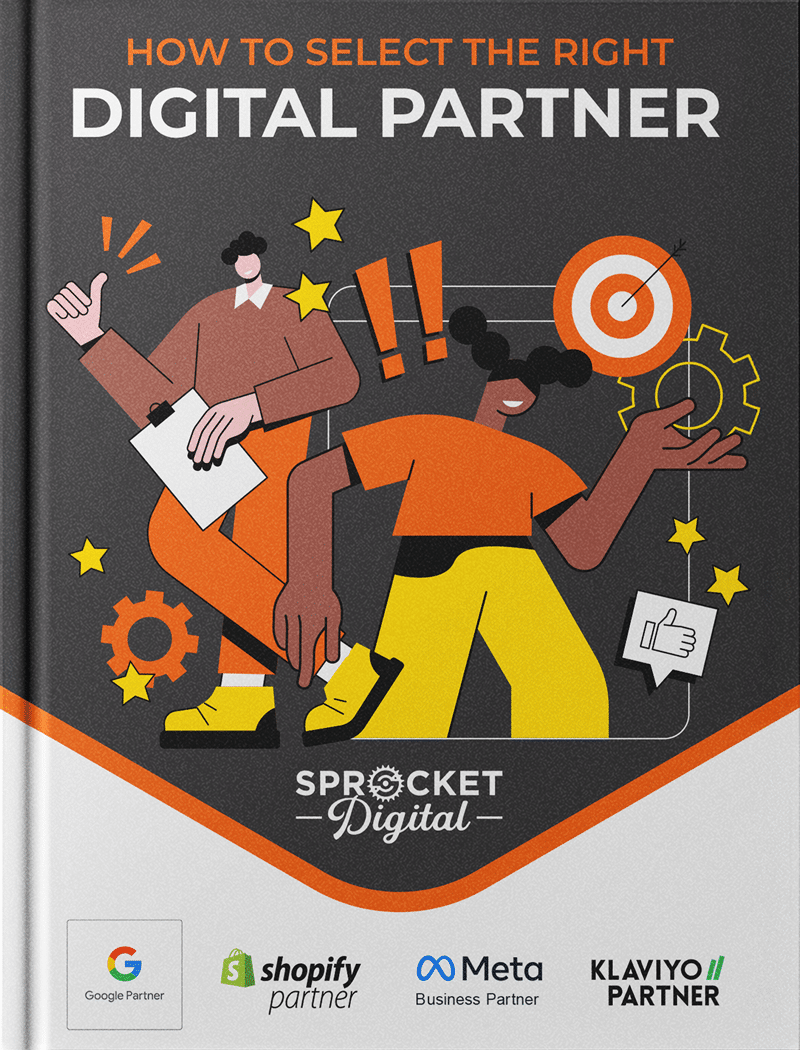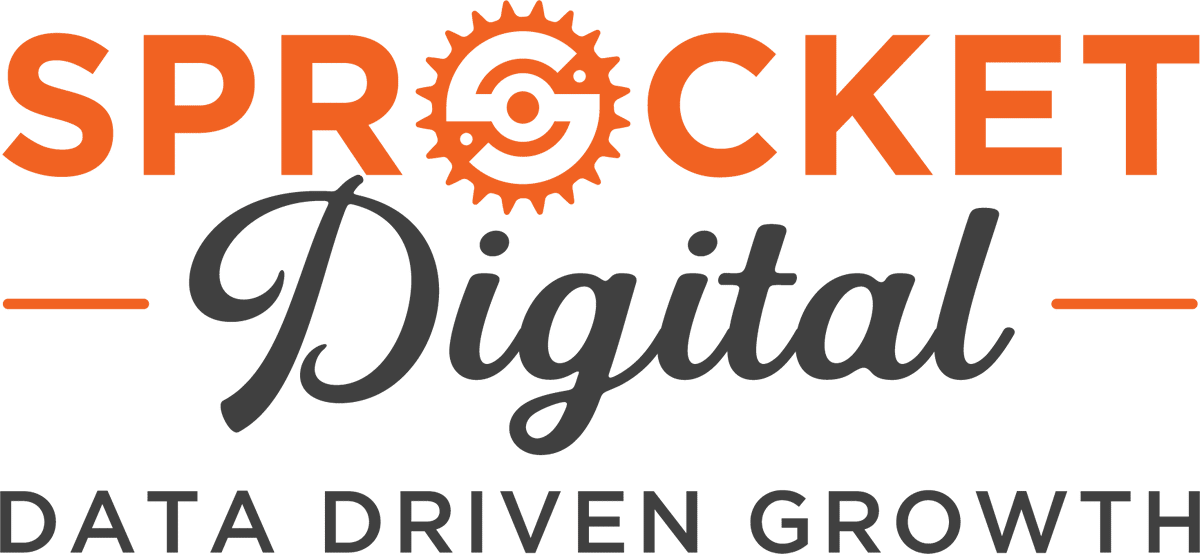AI Changed the Game. Here’s How We’re Playing It.
AI has become the quiet co-worker in just about every marketing conversation. It writes, it designs, it analyses, and sometimes it even tries to strategise. It’s efficient, tireless, and disturbingly fast.
But speed isn’t the same as impact. And automation isn’t the same as insight.
For digital marketers, AI has created a fascinating fork in the road: we can either use it to shortcut everything and risk becoming replaceable, or we can use it to sharpen how we think, work, and build. At Sprocket, we’re very much in the second camp.
We’re not here to resist AI or romanticise the old way of doing things. We’re also not jumping at every shiny tool just to say we’re “innovating.” What we are doing is integrating AI where it adds value, questioning it where it doesn’t, and always keeping human judgment at the centre of our process.
Why AI Isn’t Replacing Digital Marketing
There’s been a rumour going round for a while now, one that spans industries, job boards, and more than a few awkward team meetings. It goes like this: AI is coming for your job. Not just marketers, but coders, designers, copywriters, admin staff, account managers, the list goes on.
Understandably, that’s made people nervous. But in digital marketing, the truth is a bit more grounded. AI isn’t replacing us. It’s reshaping what we do, how we do it, and how fast we’re expected to deliver. The real shift isn’t about elimination. It’s about evolution.
And that evolution’s already happening. It used to be enough to know how to run the ads. Now, that’s automated. Now, value comes from knowing what to say, when to say it, and who actually cares. It comes from pattern recognition, creative strategy, campaign sequencing, and brand context, things AI can’t quite grasp (yet).
The marketers who thrive in this new reality won’t be the ones resisting the tools. They’ll be the ones using them intentionally. At Sprocket, that’s our aim: to work faster without lowering the quality bar, to think more clearly because we’re not bogged down in admin, and to keep strategy and creativity right where they belong (at the centre of everything).
So no, we’re not in the AI-doomsday camp. But we’re also not pretending nothing’s changed. It has. And we’re building for that change, not bracing against it.
Where AI Fits in a Smarter Marketing Process
At Sprocket, we’ve built AI into our day-to-day because it helps us move faster without lowering the quality bar. It’s not about cutting corners. It’s about removing the slow bits so we can spend more time on what matters: strategy, creative decisions and performance.
Here’s how we use it, and more importantly, why:
- Conversion Rate Analysis: We use AI tools to review websites and highlight the things that quietly tank conversion rates. That might be a cluttered layout, confusing copy or the kind of call-to-action that doesn’t call anyone to do anything. It’s a smarter way to spot problems early and build a plan that’s based on actual data, not best guesses.
- Bidding: We plug AI into our media buying to help us make smarter, faster budget decisions. It monitors thousands of data points at once (timing, device, behaviour, audience overlap) and adjusts bids to favour what’s most likely to drive a result.
- Creative Production: We use tools like OpenArt and Photoshop’s generative AI to produce creative options quickly. Perfect when a client needs the same Ad resized six different ways or wants a version that swaps out a visual without blowing the budget on a full redesign. It’s flexible, fast and always human-reviewed before going live.
- Copywriting Support: AI plays a supporting role in how we write. It helps us pressure-test ideas, spot clunky phrasing, and suggest alternatives that might land better with specific audiences. But we never pass off raw AI output as finished work. Every piece of copy is reviewed and shaped with human attention, strategic intent and a proper handle on your brand voice.
In short, we don’t let AI run the show. But we do let it run interference. It handles the background work so we can spend more of our energy on what actually drives performance.
What We Don’t Automate (and why that matters)
AI can produce things quickly. But producing something meaningful, relevant and actually effective? That still takes people.
There’s a long list of things we keep strictly human, and not because we’re old-school about it. It’s because good marketing still requires thinking that’s contextual, original and at times, completely unexpected.
Here’s where the tools stop and the people step in:
- Creative Thinking: AI is trained on what’s already been done. It can remix trends, but it struggles to think beyond them. When we’re creating new ideas or formats, we don’t want recycled content. We want original thinking. That’s where our team steps in with ideas that are tailored, relevant and built for your audience.
- Troubleshooting: When something’s off, we don’t wait for a machine to notice. Whether it’s a performance dip, a technical glitch or a shift in platform behaviour, our team reviews the full picture to understand what’s really going on. AI might highlight a symptom. We find the cause.
- Brand Relevance: Just because AI can generate content doesn’t mean it gets your brand. It doesn’t know your tone, your market, your customer quirks or the cultural context you operate in. It also doesn’t know when advice sounds generic, off-tone or weirdly American. That’s why we never publish anything without a proper human review.
- Strategy and Sequencing: AI can’t run your roadmap. It can suggest headlines, but it can’t plan a multichannel campaign that builds momentum, shifts perception and drives results over time. Knowing when to hold back, when to scale and when to pivot is still a human call based on data, experience and instinct.
- Client Communication: We don’t do automated responses. We don’t leave you guessing. Your account manager is a real person who knows your campaigns, your challenges and your goals, and stays genuinely invested in the results. AI might be fast, but it can’t replace clear, thoughtful communication with someone who actually understands your business.
Be Real: Do I Still Need an Agency?
Fair question. With all the AI tools now floating around, it’s tempting to ask whether you even need an agency anymore. We’ll be honest, AI has made it much easier to start doing things yourself. But starting is not the same as succeeding. So the real answer is: it depends.
If you’ve got the time, the technical knowledge, the budget for multiple tools, and the ability to wear ten hats at once, then yes, you can build and manage campaigns solo. But before you head off on that journey, here are a few things worth knowing.
- AI Tools Are Helpful. But They’re Not Free.
Most of the best AI marketing tools are subscription-based. Think CRO platforms, analytics dashboards, creative assistants and performance modellers. Unfortunately, there’s no ‘Magic Bullet’ tool and using multiple platforms across one brand adds up fast. In fact, it often costs more than hiring a team who already has access and knows how to get the most out of them.
- You’ll Need to Learn A Lot. And Then Some.
Even if the AI is doing the writing or the analysis, you still need to understand why things work, how to spot issues, and when something’s off. Prompting isn’t as simple as typing “write me an ad.” You’ll spend hours iterating, adjusting, rewording and second-guessing the tone. And if you don’t have deep experience in marketing strategy or platform structure, you might know something sounds wrong, but not know how to fix it.
- Platform Knowledge Still Matters. A Lot.
If something goes wrong in your ad account, email workflow or analytics setup, AI can’t troubleshoot that for you. It won’t know that your conversions are dropping because of a UTM error. Or that your Meta pixel is misfiring. Or that your email open rate tanked because of a dodgy subject line length. Knowing how everything connects, and how to diagnose issues quickly, isn’t something you can fake with a chatbot.
- Time Costs More Than You Think.
People often underestimate how much time it takes to do marketing solo, even with AI. Writing a headline takes five seconds. Writing a good headline that’s on-brand, original and clear? That takes iteration. Prompting well is a skill. Editing is another. Testing what works, interpreting performance, changing strategy, those aren’t one-click tasks. And if you’re running a business, marketing will very quickly eat every hour you didn’t think it would.
- “Close Enough” Content Can Hurt More Than It Helps.
AI-generated content can sound decent on the surface, but it often misses nuance. Tone, cultural context, local relevance, audience insight which unfortunately, don’t come baked into the prompt. What sounds okay to you might read as off-brand, generic or worse, misleading to your actual customers. That doesn’t just affect results. It affects trust.
We’re not here to fear-monger. And we’re definitely not pretending that agencies are the only answer. But if you’re thinking about going full solo with AI, it’s important to be realistic about what that actually looks like. It can work. But it comes with cost, both in money and in time. And the biggest one? Opportunity cost. Because while you’re figuring out how to get the right tone out of a prompt, you’re not scaling what already works or testing what could.
What This Means for Brands in 2025
AI isn’t going anywhere and the pressure to do more with less isn’t slowing down. For brands, this creates new possibilities, and new decisions. What should you do yourself? What should you automate? When is it time to bring in experts? And how do you know who’s genuinely helping versus just throwing more jargon at you?
We can’t speak for every agency, but here’s what we’re committed to at Sprocket.
The rise of AI has pushed us to re-evaluate everything. We’ve looked at where time gets wasted, where manual work still adds value, and where automation can take the pressure off. It’s made our process leaner, faster and more focused on outcomes beyond metrics.
Here’s what that means for you:
- We’ll keep testing the newest tools and tech, but only where they make sense
- We’ll use AI to work smarter, not to cut corners or replace creative thinking
- We’ll stay clear about what’s automated, what’s handcrafted and why it matters
- We’ll never hand you unchecked content or generic advice
- We’ll continue building marketing that’s responsive, strategic and genuinely brand-first
Marketing is shifting, but your goals haven’t changed. You still need campaigns that perform, ideas that stand out, and a team that actually knows what’s happening under the hood.
That’s what we’re here for. If you want a partner who gets where marketing is going and helps you stay ahead of it, we’d love to talk.



